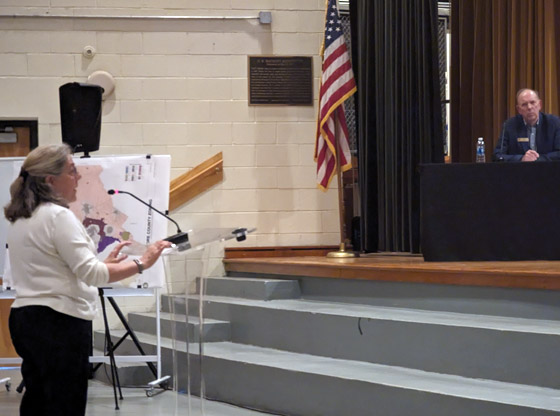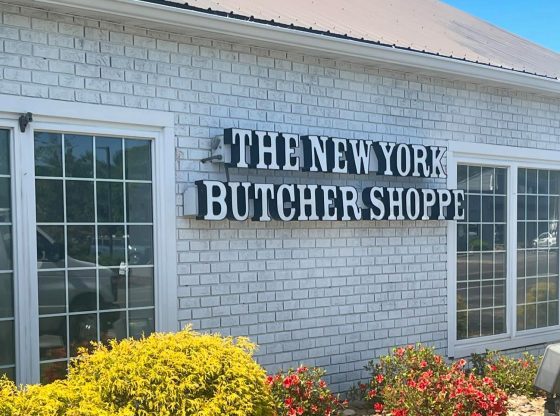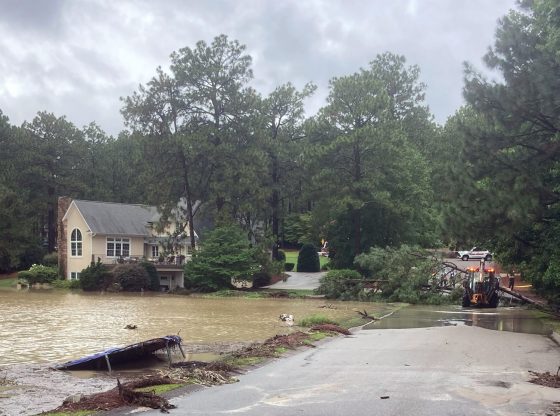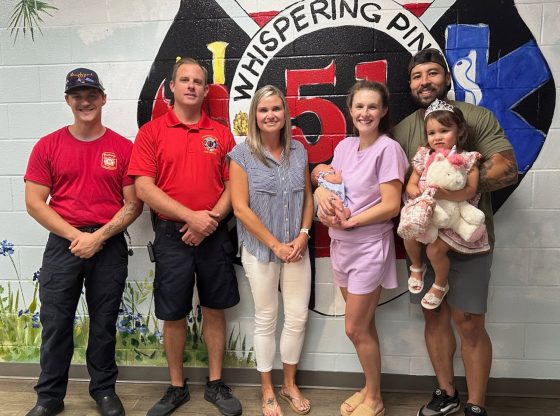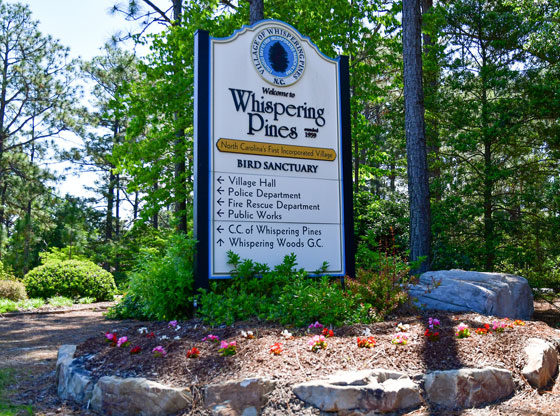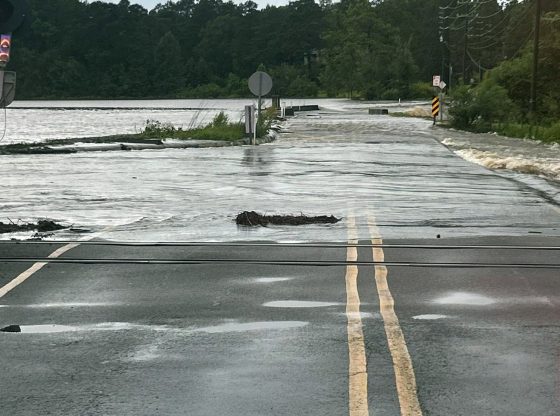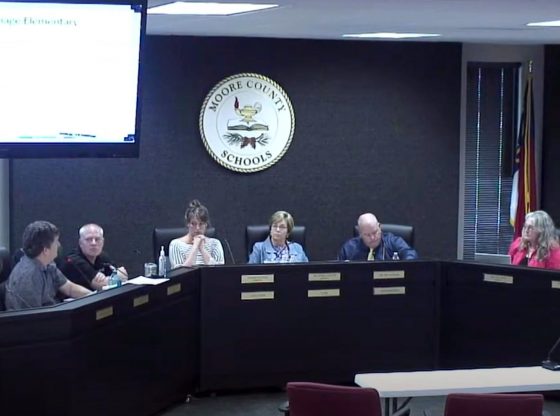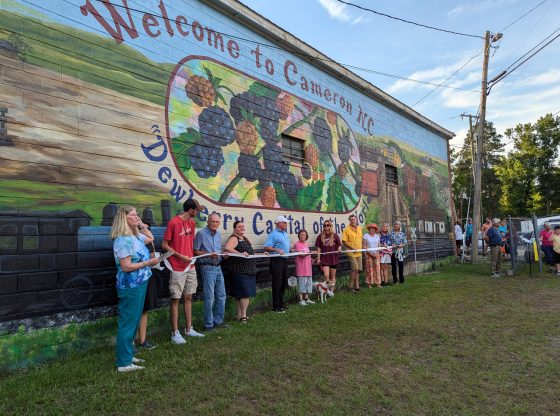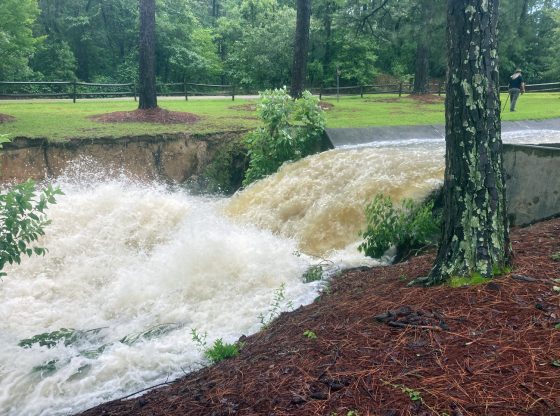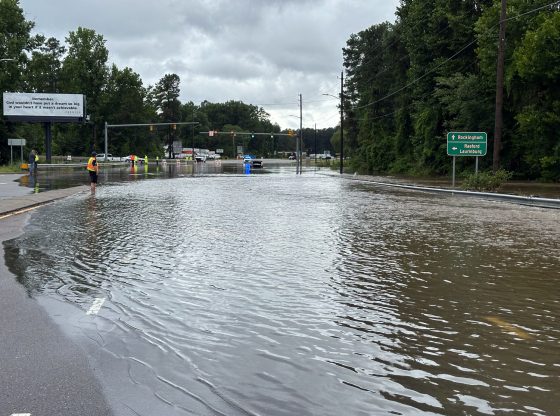Moore County Board of Commissioners and the Moore County Planning Board held a public forum Feb. 15 on updating the Land Use Plan (LUP) at North Moore High School. It was the third forum, with the first at Pinecrest High School and the second at Union Pines High School. The LUP governs the development of the unincorporated regions in the county. The last updates were made in 2013.
About 200 High Falls, Robbins, and other citizens filled the auditorium to share concerns, with the most common concern being the lack of incremental growth.
Unincorporated High Falls is primarily rural, with 124 persons per square mile, according to Zip-Codes.com, with a total of 124 residents.
Robbins has a population of 5,775, with 69.58 persons per square mile.
“A short distance from here, Partners for Progress [Moore County Economic Development Partnership] claims a [population] boom with tens of thousands incoming,” Carthage farmer Michael Parker said about how the LUP affects the area residents.
Robbins resident Rodney P. said his 100-acre farm’s creek turned orange from runoff after an industrial company was permitted 18 chicken houses without water mitigation.
Local real estate agent Angela Cummings Thompson spoke on the doom loop aspect of irresponsible growth that allows developers to place houses on concrete slabs with septic tanks near flood zones.
The doom loop is when developers are awarded suburban zoning, and industrial, retail, and office zoning is omitted, and jobs are lost. When developers build high-volume housing, instead of incremental growth on larger tracts, and the homes deteriorate at the same rate, not all property owners can afford the cost of repairs, such as roofs. Property values decrease, available middle-class housing decreases, and crime increases.
Cameron resident Jane Harbour Ethridge said developers want too many homes on small parcels.
Sally Larson, a retired potter, participated in the 2013 LUP revisions and said she had traffic, affordable housing, and broadband in rural areas concerns.
County Commissioner Chair Nick Picerno opened the forum, stating they would review notes gathered at the evening’s forum.
Haley Hogg, planning director of the Mid-Carolina Council of Governments, explained the initiative for a full report.
Citizens placed comments in the check-in box and registered to speak during the forum.
Comment on LUP on the county website.
List of Concerns From the 17 Speakers:
*Rapid growth
*Endangered species and endangering wildlife
*Increased crime and drug use along the river
*Maintaining affordable land for farmers
*Water pollution
*Decreased property values in the future
*Outsiders coming in and ruining the land
*Becoming a tourist trap
*Traffic safety
*Rural broadband
*After-school programs to teach all children English and Spanish
*Golf and equestrian population being replaced with transients
*Preserving farms
*Lack of Commissioners’ support to defend small-town heritage from developers
*Lack of incremental growth replaced with multiunit housing and large suburbs
*Department of Transportation unable to keep up with rate of growth to facilitate safety
*Saving the High Falls dam
*Displacing water resulting in sinking land and sinking structures because North Moore sits on a large aquifer
Learn LUP updates here.
Feature photo: Sally Larson speaks at the Feb. 15, 2024, public forum on the Moore County Land Use Plan at North Moore High School.
~Written by Sandhills Sentinel journalist Stephanie M. Sellers; BS Mass Communications and Journalism, MFA Creative Writing. Stephanie is also an English instructor at Central Carolina Community College and Father Vincent Capodanno High School. She is the author of young adult fiction, including When the Yellow Slugs Sing and Sky’s River Stone, and a scholarly fiction on North Carolina’s Tuscarora natives, which is available at the Special Collections Library at UNC-CH.


